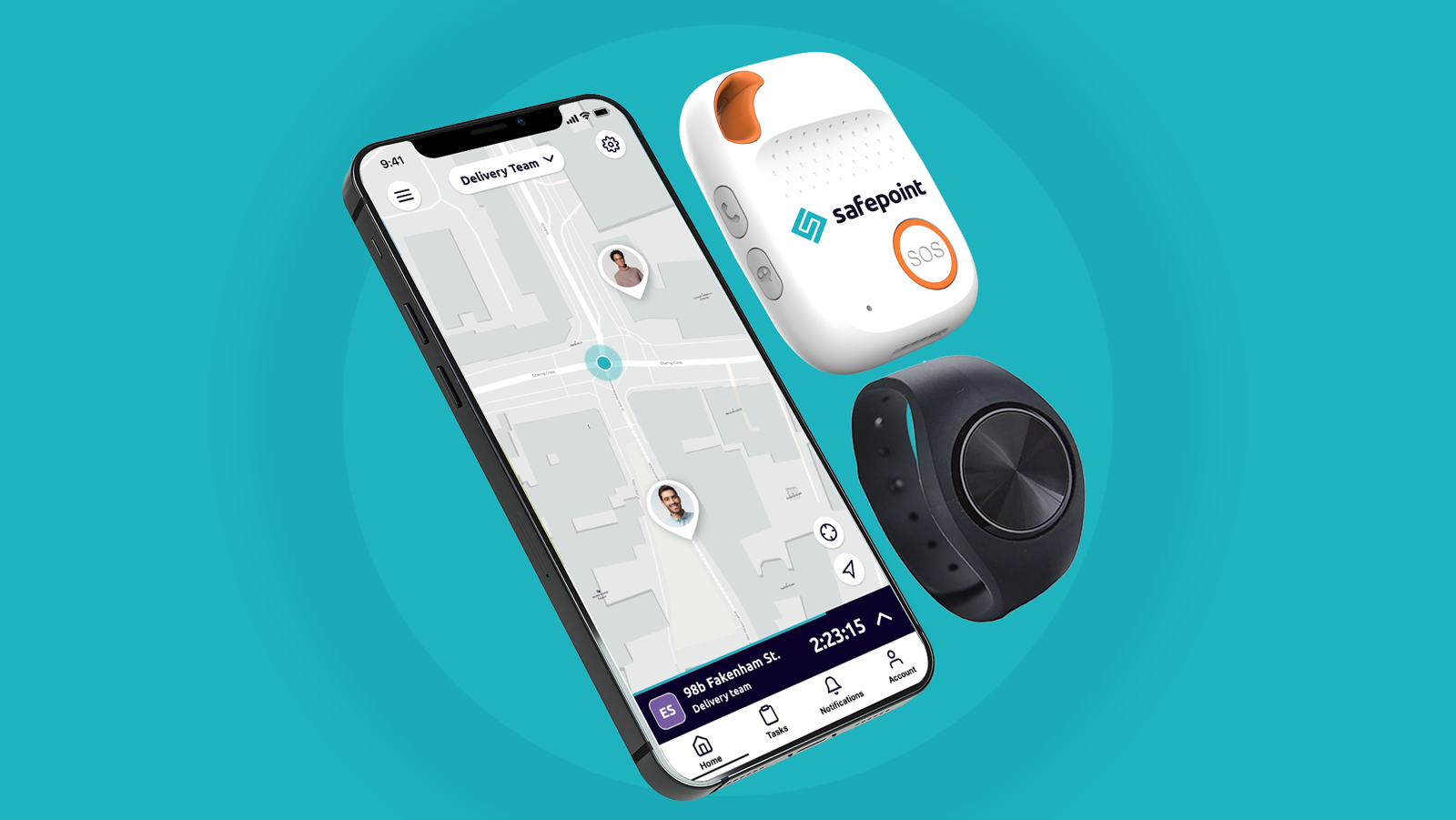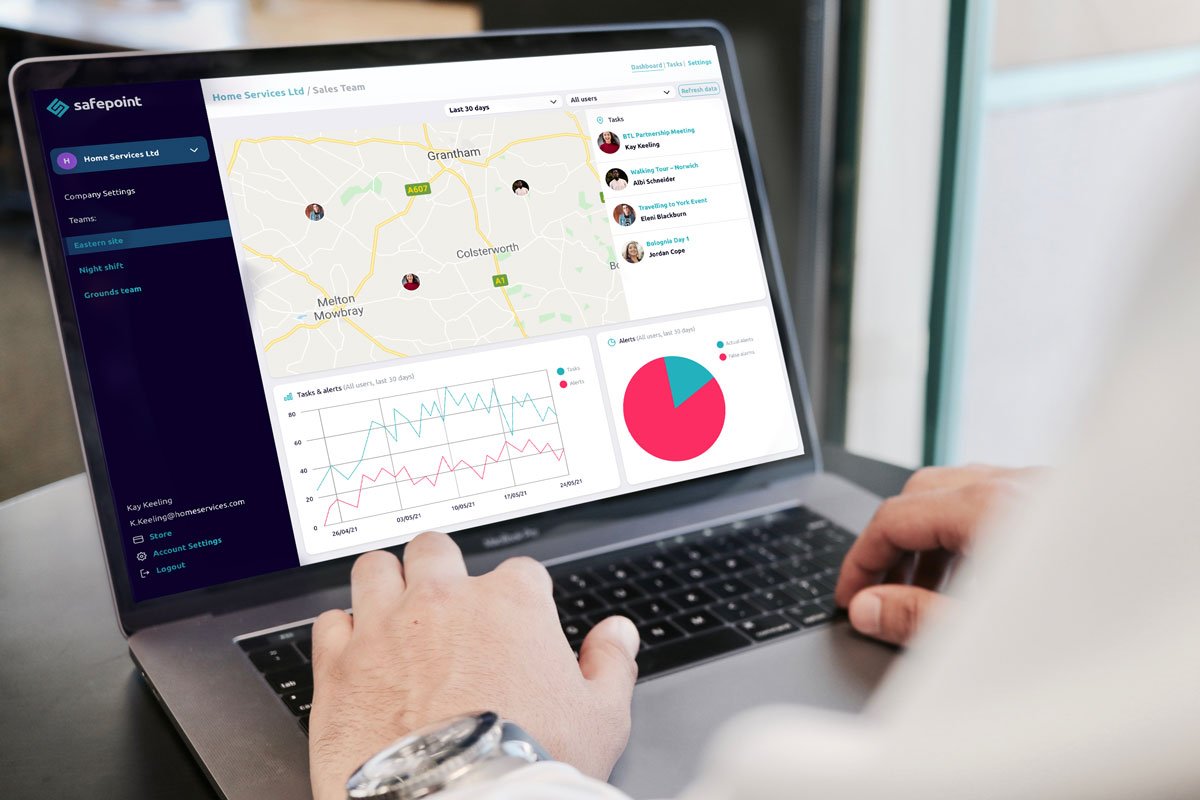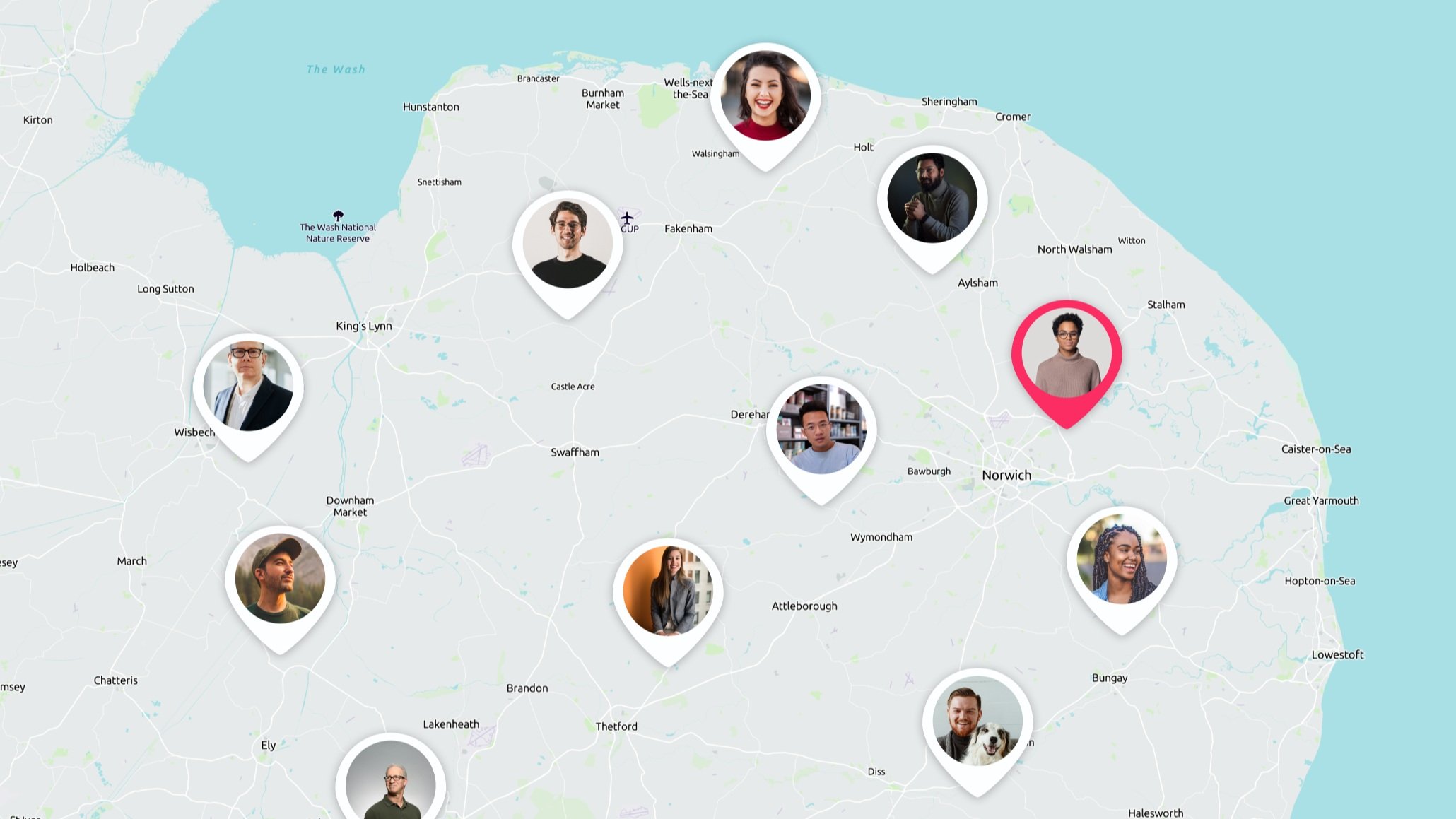The best lone worker monitoring
What is lone worker monitoring?
Lone workers can be monitored in-house or through an Alarm Receiving Centre (Which can be seen as a remote, 24/7 lone worker monitoring station). The goal is to be aware of the location and safety of your lone workers, and to react effectively if anything goes wrong.
Of course, there are many ways to “monitor” your lone workers’ safety. Some are very simple (like calling them and checking in on them) and some are more sophisticated, like pairing a dedicated lone worker solution with a specialised ARC (Alarm Receiving Centre).
In this article, we’re going to focus on protecting your team through mobile lone worker solutions and either an in-house or ARC-based monitoring system.
Monitoring lone worker solutions
Devices and apps
In order to monitor lone workers, you first need to equip your workers with the appropriate communication tools. These tools allow users to send out SOS alarms and stay connected with their team, and are far more advanced than, for instance, sending texts.
Largely, there are two main types of dedicated solutions:
Lone worker apps – A lone worker app allows users to share their live location, set up time-out alarms, raise manual GPS-linked alarms, and more. They tend to be a cheaper option as workers can use their existing smartphones.
Standalone, SIM-enabled lone worker devices –These “all-in-one” devices can trigger manual alerts, send GPS location information, and open hands-free, two-way voice calls. Unlike apps, they don’t require an existing smartphone device, but will come at a slightly higher cost.
Note: If you want to compare the pros and cons of app-based lone worker solutions vs dedicated, standalone solutions, we have a great article on it, here.
Monitoring lone workers through their devices
When lone workers send out an SOS alarm, or share their location or task progress, someone needs to monitor it. This can be done by your team, or by professionals in an ARC.
This is part of the UK’s lone worker legislation which says that employers should provide ‘training, supervision, monitoring and support for lone workers’ including ‘adequate and reliable means of communication and a way to call for help’
Can you monitor lone workers in house?
Solution’s like Safepoint’s lone worker app allow organisations to monitor their team in app. This is often the most cost effective method, but does place a fair amount of responsibility on the assigned supervisors.
How does in-house lone worker monitoring work?
Say one of your employees is starting a job alone –For instance, they are a maintenance worker entering an empty building for a few hours. They open their Safepoint app, create a timed task called (for example) “Maintenance –Main Location” for three hours and then get on with the job.
As soon as that that task is started, it is shared with their team’s assigned “guardians”. These can be the worker’s supervisor, or maybe the company has a dedicated security team.
At this point the assigned guardian can look at their own app, or a dashboard on the computer, and see what the worker is working on, how long they’ll take, where they are and, of course, whether they’re safe.
If, at any point, the worker triggers an SOS alert, their guardian can be notified through an in-app alert, email and/or text message. They can then use the information sent through the app to form a proper response.
What are Alarm Receiving Centres?
Instead of monitoring your lone workers in-house, you may want this to be handled by an Alarm Receiving Centre (ARC).
ARCs can monitor your lone workers 24/7, and are qualified to both handle emergency alerts, and to work with the emergency services to provide a critical response.
If you’ve ever triggered a burglar or fire alarm and been called by a response team, they’ll be working in an ARC. Lone worker ARCs work slightly differently as the team will be trained to focus on the user’s GPS location, their work activity and so on, but the concept is largely the same.
What to look out for in a lone worker ARC
Lone worker ARCs have a lot of responsibility. For instance, Safepoint’s award-winning lone worker system is partnered with security giants ADT. Through Safepoint, ADT processes thousands of alerts including carers threatened by clients, engineers who’ve been in car crashes, and even administrative workers with health conditions.
Handling so many alerts, talking with scared workers, and working directly with the emergency services requires an incredibly high level of quality assurance and professionalism.
Things that you will want to know about when looking at a lone worker monitoring ARC include:
BS EN 50518 – this is the main standard for ARCs. This standard covers the entire construction, systems and day to day operations of a physical alarm receiving centre.
BS8484 – this is the premium British Standard for lone working providers and should be implemented across a provider’s system –from the app to devices, to the ARC.
24/7 Coverage – this is pretty straightforward but it’s important to check. One of the main advantages of using an ARC over monitoring lone workers yourself is that someone will be awake and available whenever your team are. The BSI defines an ARC, in part, as being available 24/7.
Security association accreditations – Validation from serious security associations such as the NSI, the British Security Industry Association or the Private Security Authority can prove that an ARC has the highest of standards.
ISO certifications – ISO standards such as ISO 9001 and ISO 14001, while less specific to ARCs, can be good signs that an ARC is dedicated to meeting rigorous standards.
How best to monitor your lone workers
When deciding what lone working monitoring system is best for your organisation, it’s important to look at your specific needs. You might want to look at:
The size of your team
Your in-house monitoring capacity –I.e, can you safely keep on top of your entire remote workforce, whenever and wherever they’re working.
Handling emergencies – Would you prefer to handle potential emergencies yourself? You may feel that emergencies are best handled in-house, or you may wish for it to be handled by security professionals.
Solution type – Would you prefer an app or device-based lone worker system? Sometimes, device-based systems are better monitored by ARC professionals.
Cost – Monitoring lone workers yourself can be a cheaper option than an ARC-powered system. Be careful, however, as monitoring a large amount of lone workers can take up more of your day than you might expect. If self-monitoring risks cutting into your productivity, it may actually be more efficient to have it run by an ARC.
Can’t I have both?
When going through some of these questions, a lot of people see the benefits of having a dedicated monitoring service through an ARC, but still want to manage and oversee their team on the day to day.
Alternatively, even if an organisation is glad that an ARC makes the first point-of-contact with an at-risk worker, they would still like to be involved in the response process. That’s why we think organisations deserve a best-of-both-world system.
ARC-managed lone worker monitoring, with complete in-house oversight
We think it’s really important to use a high-quality ARC to monitor your lone workers. That’s why Safepoint partnered with ADT –the best lone worker solutions, with the best lone worker monitoring.
We also know, however, that a lot of businesses want to keep on top of their staff’s wellbeing. They may have their own internal response procedures, or they may just want to instantly know if one of their employees is at risk.
That’s why we at Safepoint made it easy for managers to be as hands-on or hands-off as they like.
Safepoint’s self-monitored lone worker protection
For a start, Safepoint offers an entirely self-monitored plan where organisations can process all tasks and alerts themselves.
If a worker triggers an alert, their assigned supervisors will be instantly notified and can manage the response through their desktop Portal or their Safepoint App. The supervisor will be given all the safety information necessary to form a proper response. What’s more, the standard plan is cheaper than the monitored plan.
Safepoint’s ARC-monitored lone worker protection
If you want an ARC-monitored lone worker solution, however, Safepoint still offers a lot of choice.
With Safepoint’s ARC-monitored plan, GuardianPlus, organisations can choose to be completely hands off: all alerts will be handled by Safepoint’s ADT-powered ARC service, and they will only be notified if an emergency is escalated.
If organisations want to be more involved, however, GuardianPlus still provides all the benefits of the standard plan.
When a worker starts a task, their supervisors will be able to see the user’s live location and task progress. In fact, Safepoint has an unmatched level of team management features within the Safepoint app and the desktop Portal.
If a worker triggers an alarm with GuardianPlus, however, this can be sent to both the ARC and the user’s assigned supervisors. The supervisor can then see the user’s live-alert and how the emergency is being handled. They will be able to see when the ARC has contacted the user and when the alert has been resolved.
If the ARC cannot get through to an alerted lone worker, they will contact all their assigned “escalation contacts”. These escalation contacts can then chose to take-over the alert themselves, or authorise a further response.
Best of both worlds
Using Safepoint’s ADT-powered ARC means that organisations have all the benefits of a top-of-the-line security team, with a really handy team management system. This means that you can always check-in on your team’s safety, while also being able to sleep easy at night, knowing your team are protected by 150 years of security pedigree!
So what is the best lone worker monitoring system?
Lone worker apps and devices
We think that Safepoint provides the best lone worker apps and devices on the market. In fact, Safepoint just won 2024’s Health and Safety Tech Innovation Award for its outstanding contributions to keeping lone workers safe.
Lone worker ARC
We also think that Safepoint’s unique partnership with ADT means it has an unprecedented level of lone worker monitoring. ADT has over 150 years of experience keeping people safe, at work and in the home, and is accredited to the very highest standards.
Self-monitored or ARC-monitored?
Personally, we think that the best monitoring system is when both come together: Safepoint’s innovative lone worker solutions, with ADT’s best-in-class protection. Maybe that’s why our ARC-centred GuardianPlus package is used by thousands of lone workers around the world.
But, if you already have a robust staff-monitoring system in place, our standard plan can absolutely work for you, and save you a few pennies too! The choice is yours.
Exclusive discounts for enterprise customers
Speaking of saving pennies, if you want to protect 25 or more lone workers, get in touch with Safepoint for an exclusive quote. While there is no company too small, we do offer great discounts for larger companies, and currently protect some of the best known brands in the world!
Award-winning lone worker solutions
backed by ADT’s best in class safety monitoring











